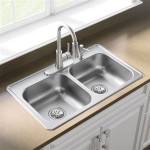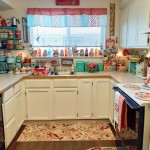Kitchen Island Built-In Seating: A Comprehensive Guide
Kitchen islands have evolved from simple work surfaces to central hubs of activity within the modern home. They serve as preparation areas, dining spaces, and social gathering points. Integrating built-in seating into a kitchen island design enhances functionality and promotes interaction, transforming the island into a versatile and inviting focal point. This article delves into the considerations, benefits, design options, and practical aspects of incorporating built-in seating into a kitchen island.
Understanding the Benefits of Built-In Seating
Built-in seating in a kitchen island offers several distinct advantages, enhancing both the practical and aesthetic appeal of the kitchen. These advantages extend beyond simply providing a place to sit.
First, built-in seating maximizes space utilization. Especially beneficial in smaller kitchens or open-plan living areas, integrated seating eliminates the need for freestanding chairs or stools that occupy valuable floor space. Benches or banquettes built directly into the island structure provide seating without encroaching on the surrounding area, creating a more streamlined and efficient layout. This is particularly useful in kitchens where space is at a premium and every square foot counts.
Second, built-in seating fosters social interaction and connectivity. The kitchen often serves as a central gathering place for family and friends. Incorporating seating into the island design encourages people to congregate, converse, and participate in activities happening in the kitchen. Whether it's enjoying a casual meal, helping with food preparation, or simply engaging in conversation, built-in seating promotes a sense of togetherness and connection. It transforms the kitchen from a purely functional space into a social hub.
Third, built-in seating can enhance the aesthetic appeal of the kitchen. When thoughtfully designed, the seating can complement the overall style and décor of the kitchen. The choice of materials, colors, and design elements can be carefully considered to create a cohesive and visually appealing space. Upholstered benches, custom banquettes, or integrated stools can add texture, color, and visual interest to the kitchen, enhancing its overall aesthetic appeal. It allows for personalized design choices that reflect the homeowner’s style.
Key Design Considerations for Built-In Island Seating
Successful integration of built-in seating requires careful planning and consideration of several design factors. These factors encompass space requirements, seating types, materials, and functionality.
Space and Layout: Before incorporating built-in seating, accurately assess the available space and the overall kitchen layout. This includes measuring the dimensions of the island, considering walkways and traffic flow, and ensuring sufficient legroom and clearance around the seating area. A minimum of 36 inches of clearance between the seating area and adjacent countertops or walls is recommended to allow for comfortable movement. The depth and width of the seating should also be carefully considered to accommodate users comfortably. A poorly planned seating area can obstruct traffic flow and make the kitchen feel cramped.
Seating Types and Styles: Several seating types can be integrated into a kitchen island, each offering unique aesthetic and functional characteristics. Common options include benches, banquettes, and built-in stools. Benches provide a simple and versatile seating option, often running along one side of the island. Banquettes offer a more formal and comfortable seating experience, typically featuring upholstered cushions and backrests. Built-in stools can be integrated into the island structure, providing a contemporary and space-saving seating solution. The choice of seating type should align with the overall style of the kitchen and the specific needs and preferences of the homeowner. Evaluate the practicality of cleaning and maintenance for each seating type as well.
Materials and Finishes: The selection of materials and finishes plays a crucial role in the durability, comfort, and aesthetic appeal of the built-in seating. Durable and easy-to-clean materials are essential, especially in a high-traffic area like the kitchen. Common materials for benches and banquettes include wood, laminate, and upholstery. Wood provides a warm and natural look, while laminate offers durability and resistance to stains and scratches. Upholstery adds comfort and texture, but requires regular cleaning and maintenance. The finishes should complement the existing cabinetry, countertops, and flooring, creating a cohesive and harmonious design. Consider the color palette and texture for a balanced look.
Functionality and Storage: Consider incorporating storage solutions into the built-in seating to maximize functionality and efficiency. Benches and banquettes can be designed with built-in drawers, cabinets, or lift-up seats, providing valuable storage space for kitchen essentials, such as cookware, linens, or serving dishes. This is particularly beneficial in smaller kitchens where storage space is limited. The storage compartments should be easily accessible and designed to efficiently utilize the available space. Ensure that the storage mechanism (drawers, hinges, etc.) is durable and reliable.
Practical Considerations for Installation and Maintenance
The successful implementation of built-in seating involves practical considerations regarding installation, structural integrity, and long-term maintenance. These considerations ensure the safety, durability, and longevity of the seating.
Structural Integrity: Ensuring the structural integrity of the island and seating is paramount. If the island is not already equipped to support built-in seating, reinforcement might be necessary. This could involve adding additional support beams, strengthening the foundation, or modifying the island's structure to accommodate the weight and stress of the seating. Consulting with a qualified contractor or structural engineer is essential to ensure that the island can safely support the built-in seating and that the installation meets all relevant building codes and safety standards. Improperly supported seating can lead to instability, damage, and potential safety hazards.
Professional Installation: Proper installation is critical for the functionality and longevity of the built-in seating. Hiring experienced contractors ensures that the seating is installed correctly and securely. The contractors should have expertise in carpentry, cabinetry, and structural work, and they should be familiar with relevant building codes and safety regulations. They should also have the necessary tools and equipment to perform the installation efficiently and effectively. A professional installation minimizes the risk of errors, ensures the structural integrity of the seating, and contributes to the overall aesthetic appeal of the kitchen.
Maintenance and Cleaning: Regular maintenance and cleaning are essential for preserving the appearance and functionality of the built-in seating. The specific maintenance requirements will vary depending on the materials used. Wood surfaces should be cleaned regularly with a damp cloth and mild detergent, and they may require periodic refinishing or sealing to protect them from moisture and wear. Upholstered surfaces should be vacuumed regularly to remove dust and debris, and they may require professional cleaning to remove stains and spills. Laminate surfaces are generally easy to clean with a damp cloth and mild detergent. Promptly addressing any spills or stains prevents them from becoming permanent. Regular maintenance helps to extend the lifespan of the seating and keep the kitchen looking its best.
Ergonomics and Comfort: The height and depth of the seating should be ergonomically designed for comfortable use. The ideal seat height is typically around 18 inches, allowing for comfortable legroom and posture. The depth of the seating should also be sufficient to provide adequate support for the user's thighs. The angle of the backrest, if applicable, should be comfortable and supportive. Consider adding cushions or padding to enhance comfort, especially for longer periods of sitting. Ergonomically designed seating promotes good posture, reduces strain, and enhances the overall user experience. It also addresses the needs of different family members with varying heights.
Incorporating electrical outlets into the island structure should be considered. This allows for convenient charging of electronic devices while seated at the island. Outlets can be discreetly integrated into the island's side panels or countertop, minimizing visual clutter. Ensure that the outlets are properly grounded and meet all relevant electrical codes and safety standards. Consider the placement of the outlets to ensure they are accessible from the seating area without creating tripping hazards. USB charging ports can also be integrated for added convenience. This adds functionality to the seating area.
Lighting is another important consideration. Task lighting, such as pendant lights or recessed lighting, positioned above the island can provide ample illumination for food preparation and other activities. Adjustable lighting allows for customized brightness levels, accommodating different tasks and moods. Consider adding under-cabinet lighting to illuminate the seating area, creating a warm and inviting ambiance. The lighting should complement the overall style of the kitchen and enhance the functionality of the built-in seating. Avoid glare and shadows that can detract from the user experience. Also, consider the color temperature of the lighting.
Finally, future-proofing the kitchen island is essential. Consider the possibility of future renovations or modifications. Design the built-in seating in a way that allows for flexibility and adaptability. This might involve using modular components that can be easily reconfigured or removed. Consider the possibility of adding or removing storage compartments, changing the seating layout, or updating the materials and finishes. A well-planned design allows for future upgrades and ensures that the kitchen remains functional and stylish for years to come. This also helps to increase the resale value of the home.

10 Kitchen Islands That Feature Banquette Seating

Kitchen Featuring An Island With Bench Seating Omega

Kitchen Island Built In Dining Bench Design Ideas

Beautiful Kitchen Islands With Bench Seating

Dining Bench On Back Of Kitchen Island Design Ideas

Incorporating Seating Into A Kitchen Island

7 Creative Design Ideas For Kitchen Island Bench Seating

47 Best Kitchen Island Ideas Stylish Unique Design Tips

Rethink Your Kitchen Island With Banquette Seating

30 Kitchen Islands With Seating And Dining Areas Digsdigs








